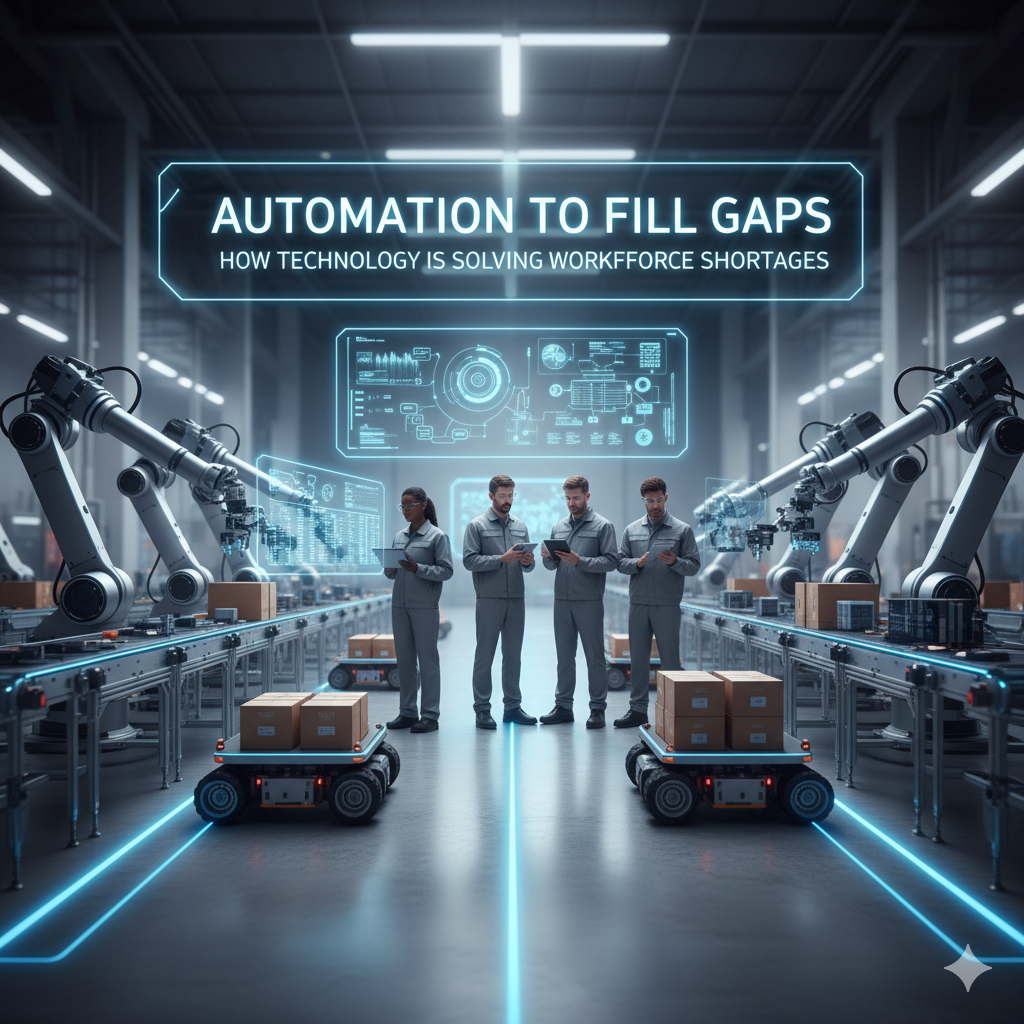🧭 Introduction
Around the globe, businesses face a shared challenge — a shortage of qualified workers. Plants medical centers, storage facilities, and even corporate settings struggle to find staff for crucial positions. To address this, companies turn to automation and robotics — clever machines that help people work quicker more , and more .
🤖 The Meaning of “Automation to Fill Gaps”
“Automation to fill gaps” refers to the use of technology to handle tasks when there’s a lack of available human workers. This automation includes robots, systems powered by AI, and smart software that carry out repetitive or time-intensive jobs.
For instance:
- Robots move packages in warehouses.
- Software bots organize data or send reports on their own.
- Machines help doctors or factory workers by handling simple repetitive tasks.
This allows companies to keep running smoothly even when they face staff shortages.
🏭 Why Businesses Need Automation
Here are the main reasons companies are turning to automation these days:
- Not enough skilled workers – Several industries struggle to find trained staff in manufacturing and logistics.
- Increased labor expenses – Automation cuts down the expenses of hiring and training large groups.
- Quicker work – Robots don’t require breaks or rest so work goes on non-stop.
- Less errors – Machines carry out tasks with high precision boosting quality.
- Safer workplaces – Automation handles dangerous tasks protecting people from injury.
In a nutshell, automation helps businesses stay productive even when human help is scarce.
🌍 Real-Life Examples of Automation Filling Gaps
Let’s explore how automation is already making a difference in various industries:
- Manufacturing: Robotic arms put products together fast when there’s a lack of skilled workers.
- Healthcare: AI chatbots and robotic nurses lend a hand with scheduling and helping patients.
- Agriculture: Drones and smart tractors pitch in with planting, watering, and gathering crops.
- Retail: Self-checkout machines and robots that check stock cut down on employee tasks.
- Warehousing: Automated guided vehicles (AGVs) and robots that sort items make delivery work quicker.
These technologies help companies keep up their productivity while freeing up human workers to zero in on creative tasks and making choices.
🧠 How AI Shapes Modern Automation
Automation becomes even more effective when paired with Artificial Intelligence (AI). AI enables machines to gain knowledge from data, evaluate performance, and improve their choices as time goes on.
Here are some examples of what AI-powered robots can do:
- Spot and correct mistakes on their own
- Adapt to new work settings
- Offer valuable insights to enhance business operations
This approach is known as “intelligent automation”, and it’s molding the future of work.
🤝 People and Machines Joining Forces
Automation isn’t here to take jobs away from people — it’s here to support them. When machines handle the repetitive tasks, people can turn their attention to creativity solving problems, and planning ahead.
This teamwork between humans and robots leads to:
- Safer workplaces
- Quicker outcomes
- Better quality products
- Fresh job prospects in tech and robotics
The future of work involves people and technology collaborating.
🏁 To wrap up
Automation has an impact on how the world operates — and it’s doing so to improve things. By filling workforce gaps, machines and AI help companies stay productive even during tough times. The future won’t pit humans against machines, but will see humans working with machines — to build a smarter, safer, and more productive world together.
